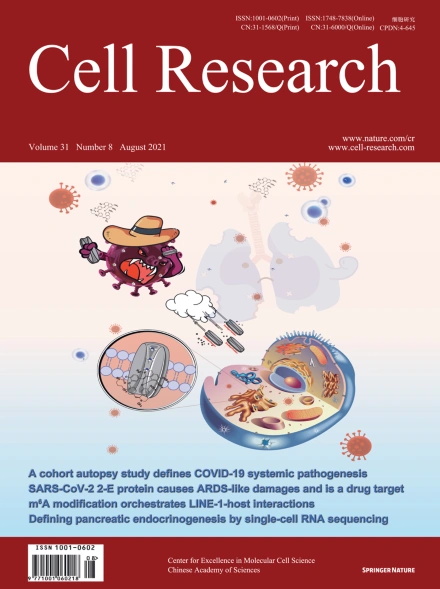
Advanced Search
Submit Manuscript
Advanced Search
Submit Manuscript
Volume 31, No 8, Aug 2021
ISSN: 1001-0602
EISSN: 1748-7838 2018
impact factor 17.848*
(Clarivate Analytics, 2019)
Volume 31 Issue 8, August 2021: 904-918
Single-cell transcriptomic analysis of somatosensory neurons uncovers temporal development of neuropathic pain
Kaikai Wang1,2,3 , Sashuang Wang1,3 , Yan Chen4 , Dan Wu1,3 , Xinyu Hu1,2,3 , Yingjin Lu4,5 , Liping Wang6 , Lan Bao2,7 , Changlin Li4,5,* , Xu Zhang1,2,3,4,*
1Institute of Neuroscience, State Key Laboratory of Neuroscience, CAS Center for Excellence in Brain Science and Intelligence Technology, Chinese Academy of Sciences, Shanghai 200031, ChinaPeripheral nerve injury could lead to chronic neuropathic pain. Understanding transcriptional changes induced by nerve injury could provide fundamental insights into the complex pathogenesis of neuropathic pain. Gene expression profiles of dorsal root ganglia (DRG) in neuropathic pain condition have been studied. However, little is known about transcriptomic changes in individual DRG neurons after peripheral nerve injury. Here we performed single-cell RNA sequencing on dissociated mouse DRG cells after spared nerve injury (SNI). In addition to DRG neuron types that are found under physiological conditions, we identified three SNI-induced neuronal clusters (SNIICs) characterized by the expression of Atf3/Gfra3/Gal (SNIIC1), Atf3/Mrgprd (SNIIC2) and Atf3/S100b/Gal (SNIIC3). These SNIICs originated from Cldn9+/Gal+, Mrgprd+ and Trappc3l+ DRG neurons, respectively. Interestingly, SNIIC2 switched to SNIIC1 by increasing Gal and reducing Mrgprd expression 2 days after nerve injury. Inferring the gene regulatory networks after nerve injury, we revealed that activated transcription factors Atf3 and Egr1 in SNIICs could enhance Gal expression while activated Cpeb1 in SNIIC2 might suppress Mrgprd expression within 2 days after SNI. Furthermore, we mined the transcriptomic changes in the development of neuropathic pain to identify potential analgesic targets. We revealed that cardiotrophin-like cytokine factor 1, which activates astrocytes in the dorsal horn of spinal cord, was upregulated in SNIIC1 neurons and contributed to SNI-induced mechanical allodynia. Therefore, our results provide a new landscape to understand the dynamic course of neuron type changes and their underlying molecular mechanisms during the development of neuropathic pain.
https://doi.org/10.1038/s41422-021-00479-9